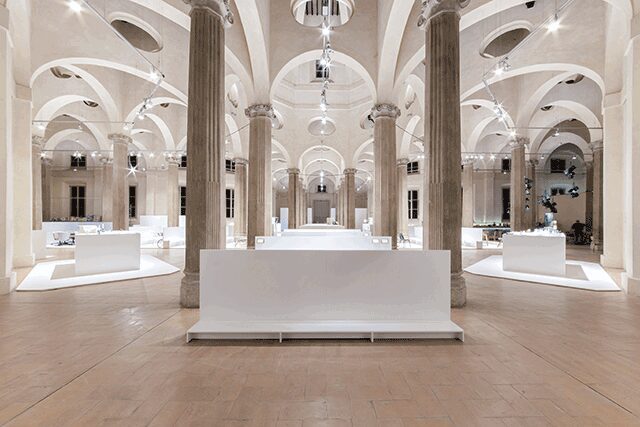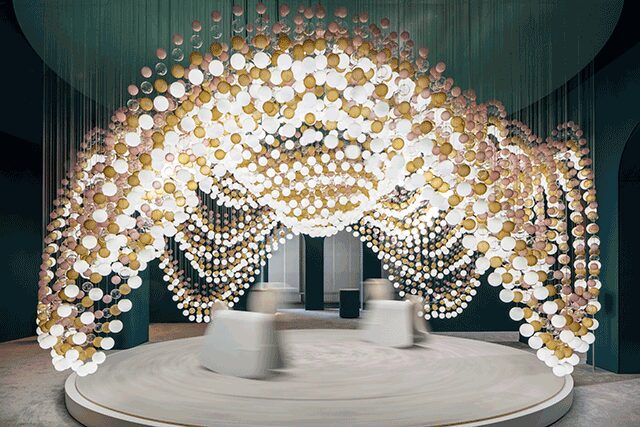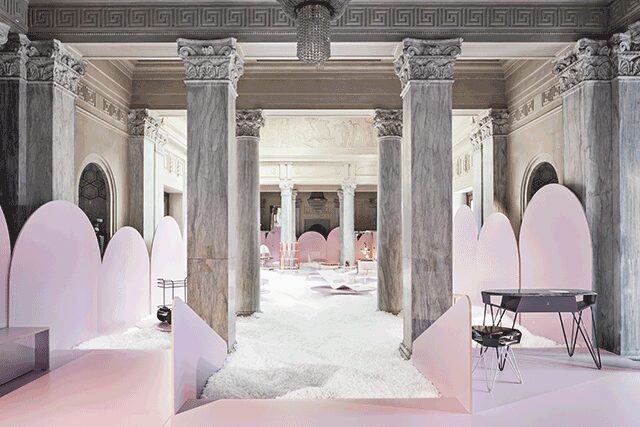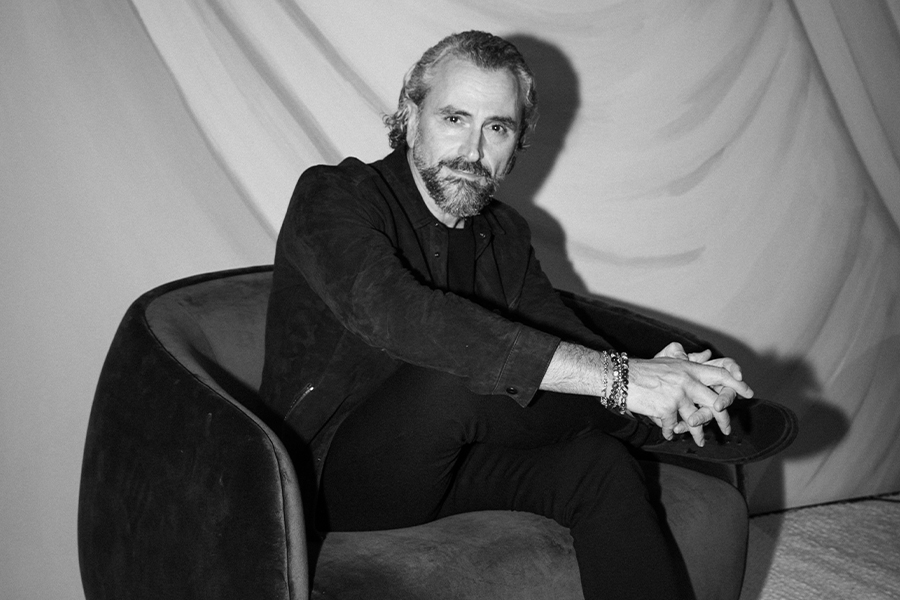In 2011, Michael Vasku cofounded Vasku & Klug Studio with partner Andreas Klug. Known for its provocative exhibition architecture, the Vienna- and Prague-based design firm is propelled by cognitive and computer science. They are also creative directors at Preciosa Lighting, part of the Czech crystal behemoth, where they invigorate the heritage brand with technological innovations. During his presentation, he offered attendees a glimpse into his science-based artistic process.
Imagination Leads to Happiness
Inspired by their dreams and memories from childhood, Vasku & Klug’s designs are “not meant to save the world,” he says, but “it’s our goal to add some moments of joy.” For instance, at Salone del Mobile in Milan this year, visitors waited for hours in the rain to enter Vasku & Klug’s Pleasure & Treasure installation, which featured 30 different pieces by Austrian designers in a 550-square-foot pool of organic and biodegradable packing peanuts. Five years ago at the Milan show, they also made waves by transforming a former church into the Vatican-approved Confession of Design, another contemporary Austrian design showcase that encouraged guests to contemplate, pray, and observe the objects while sitting on church benches.
Interaction Deepens Emotional Connection
“We are creating moments that are addressing emotions, your senses, and bringing a smile [to your face],” Vasku says. The studio’s multisensory installations have included a gingerbread house, with visitors smelling and eating their way through it to reveal the actual exhibition, and a table laid out with small gemstones accompanied by tools to allow people to play with the crystals. These examples reinforce Vasku’s belief that stoking the senses leads to an embedded memory, “because it was an emotional moment, not a socio-cultural [one].”
Gestures Matter
Some of Vasku’s installations explore the importance of movement. There’s the various Pearl chandeliers for Preciosa that, through a neural network, react to the sounds of guests clinking a variety of glass types, and another that translates breath into light via sensors, creating an “interaction not just between a person and an object, but also between two people,” he says. “Their breaths meet, and they light up the entire space.”

The Vatican-approved Confession of Design was housed in a former church during the 2014 Salone del Mobile

Preciosa’s Pearl Curtain chandelier responds to the sound of clinking glasses through a neural network



